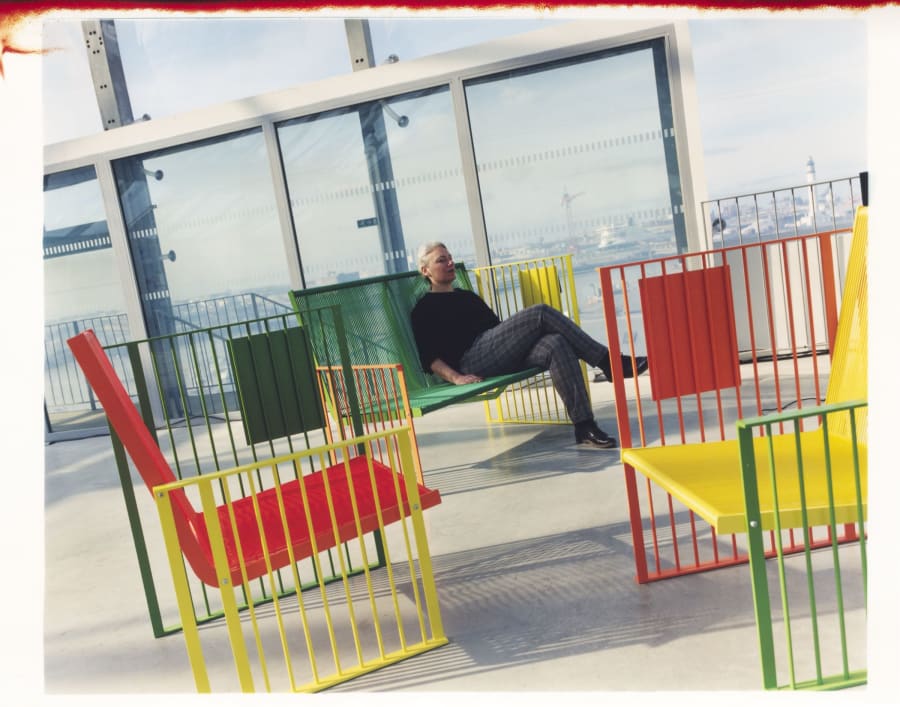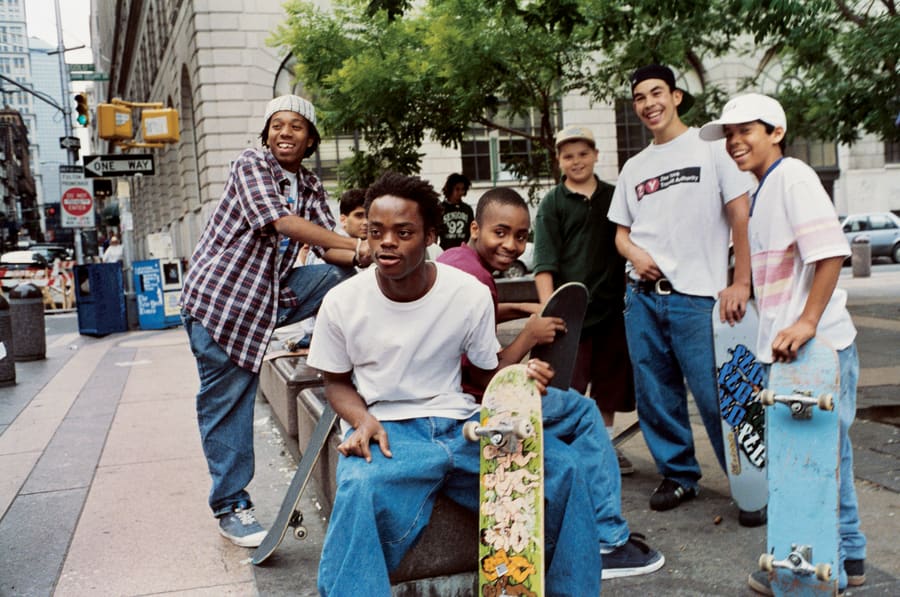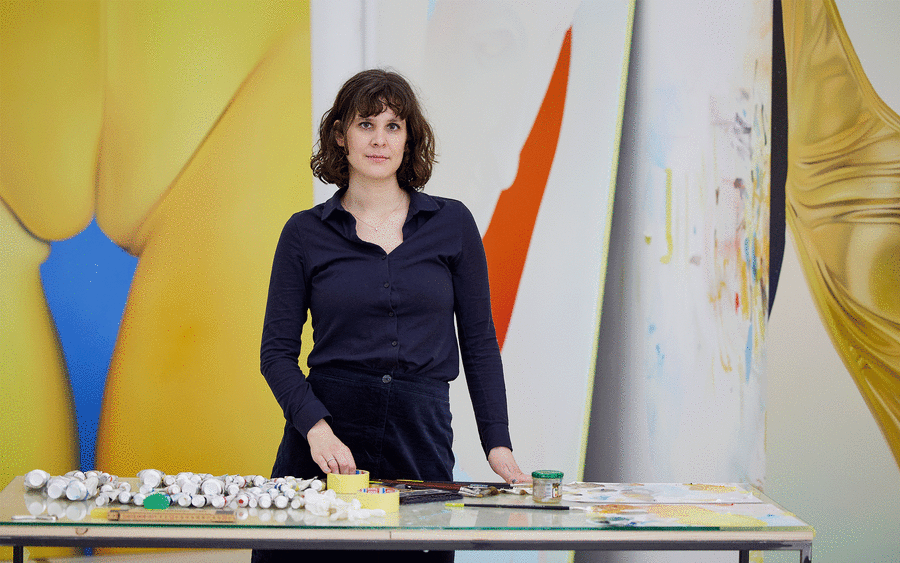Where is the line between art and design? In 2024, it can be difficult to say. In recent years, art curators have increasingly found a place for designers in their galleries, and artists have been keen to do away with the limitations of either category.
‘I don’t love attaching such stable answers to these vast, porous ideas, and I’ve come to resent any whiff of hierarchy around this subject,’ said Laura González, co-founder of The Must, an online marketplace that sells functional products, often created by established visual artists She turns the question around, leaving the answer up to the creators themselves. ‘What I think about more is, what is the difference between a designer and an artist? To the extent that there is one, it has a lot to do with intention and process.’
That type of thinking opens up the possibilities for both makers and the people who enjoy seeing their work wherever they can find it, and it does not dismiss the ability of either discipline to reach its full potential. The best design serves more than its practical purpose; it can enlighten, teach us history, bring people together. Those ideas come together in various forms, and across the globe. The six examples below show how, and where, this is happening.
In Milan, American auteur David Lynch has created an interactive installation for this year’s Salone del Mobile furniture expo (April 16-21, 2024) that aims to investigate the links between filmmaking and design. Lynch is best-known for moody movies and television shows, such as Blue Velvet and Twin Peaks — projects where set design and furniture choices have been crucial to character and story development. He has also long played a role in the design and art worlds; Lynch presented a furniture collection in Milan back in 1997 and his multifaceted work was the subject of a solo show at the Fondation Cartier pour l’art contemporain in Paris in 2007.
For Salone del Mobile, Lynch will mastermind ‘Interiors by David Lynch: A Thinking Room,’ which will consist of two rooms outfitted with large video screens projecting his films and showing the role design played in each. The rooms — wrapped in blue velvet curtains — are meant to be meditative and a bit mysterious, reflecting the aura of Lynch’s landmark creations. ‘It’s a place in which the visitor, the viewer, enters into a dimension that is completely [their] own, completely other,’ said the show’s curator, Antonio Monda.
In Denver, Colorado, the exhibition ‘Have a Seat: Mexican Chair Design Today’ (February 18-November 3, 2024) is luring big crowds to the Denver Art Museum. The show was organized by Jorge Rivas Pérez, the museum’s curator of Latin American art, who more often assembles exhibitions of painting and sculpture drawn from an in-house collection of 3,000 objects from that part of the world. But Rivas saw something important happening during recent travels in Mexico: a flood of new and interesting design emerging from different parts of the country simultaneously, a ‘movement’ as he calls it, stretching from Mexico City to Veracruz to Oaxaca, enabled by a new generation of talent and a strong Mexican economy. He wanted to capture the trend in a show and chose chairs to make his point.
In Venice, the experimental collective Petticoat Government will take over the Belgian Pavilion at this year’s Venice Biennale (April 20-November 24, 2024), with a plan to upend traditional concepts of both ‘artist’ and ‘exhibition.’ The collective combines the skills of creatives whose disciplines stretch across art, architecture, typography, curatorial practice, and cartography.
Petticoat Government wants to replace the static pavilion format with a work that moves over time, and from place to place, unfolding in different chapters along the way. Think of it as a journey, instead of a show, that started on March 9 when 100 members of the project’s team began traveling together on two buses, crossing the Alps over the Resia Pass, and carting with them oversized figures that represent folkloric characters from across Europe. The trip will pass through Venice for the length of the Biennale, but then continue into next year passing through France and Belgium. In that way, the pavilion is merely a stop on the way rather than end product of their efforts. They document it all on Instagram.
In London, the artist-made fashion and design marketplace called The Must is setting up a brick-and-mortar exhibition of the wares it usually sells via the web (April 4-May 2, 2024) at the Battersea Power Station, a former coal power plant on the banks of the River Thames that has been converted into a high-end retail center.
The Must’s motto is ‘not a museum store,’ and it has a unique way of doing business, connecting buyers directly to makers around the globe who then ship their own products to the consumer. That reduces emissions for the planet’s sake while cutting supply-chain costs and increasing profits for the makers.
The Must, founded by Laura González and Ana Sokoloff, has succeeded by blurring the line between artist and designer and letting its customers decide where the definitions fall. In some ways, it is a furniture and housewares store — function is a key trait of all of its objects. But it borrows tricks from the visual art world, trading in trendy names – ranging from established artists, such as Spain’s Santiago Sierra, to hot up-and-comers, like Brazil’s Allan Weber – and selling many objects in limited editions, raising their rarity and value, similar to the way galleries deal prints and photographs.
In Jose Ignacio, Uruguay, the recently-opened Casa Neptuna serves as a structural manifestation of how Argentinian legend Edgardo Giménez, now 81, has spent a lifetime crossing back and forth between the disciplines of architecture and art. Giménez, whose buildings present as large-scale sculptures, has designed scores of houses over his career, but he has also worked extensively as a fashion, set, and graphic designer, with his prints collected by major international museums.
Casa Neptuna, which opened last year on the campus of the Fundación Ama Amoedo cultural center, was created as a two-bedroom living and studio space for the organization’s rotating resident artists. But it is most notable for its expressive exterior, full of bright colors, geometric forms, and references to classical architecture. It is as much Frank Stella and Ellsworth Kelly as it is Philip Johnson and James Stirling — though it is entirely Edgardo Giménez.
In Washington, D.C., Ethiopian-American artist and industrial designer Jomo Tariku creates boundary-breaking objects that inspire a new way of thinking about furniture. Tariku’s pieces are in the permanent collections of institutions including the Philadelphia Museum of Art and the Los Angeles County Museum of Art, and his ‘Meedo’ chair is part of the ongoing Afrofuturist show ‘Before Yesterday We Could Fly’ at New York’s Metropolitan Museum of Art.
Tariku’s work is, at its heart, functional. His chairs, tables, and stools are most frequently made using wood. But his objects cross the line into art by being more than furniture – they say something about the history and culture of Africa and how it exists around the world today. His three-legged ‘MeQuamya’ chair, for example, was inspired by the prayer and processional staff of the Ethiopian Orthodox church, but is rendered in the sparse, stripped-down style associated with Modernism. His ‘Meedo’ chair is molded into the shape of a hair comb commonly used by people of African descent, drawing common bonds between generations of Africans spread around a global diaspora.
As varied as they are stimulating, these shows and initiatives contribute to the breakdown of traditional definitions surrounding art and design – a welcome evolution for those who questioned these distinctions all along.
Ray Mark Rinaldi is an arts journalist and critic based in Mexico City and Denver, Colorado. He contributes regularly to The New York Times, Hyperallergic, Dwell, Opera America, and other publications.
Caption for top image: Installation view of ‘Have a Seat: Mexican Chair Design Today’, Denver Art Museum, February 2024. Courtesy of Denver Art Museum.
.


